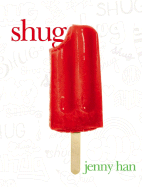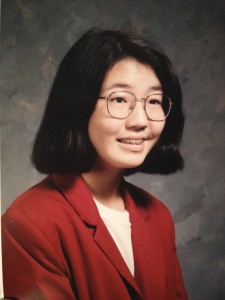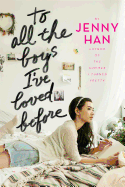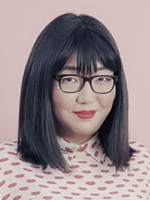TeachingBooks.net is delighted to welcome award-winning author Jenny Han as our featured guest blogger.
Each month, we ask one distinguished author or illustrator to write an original post that reveals insights about their process and craft. Enjoy!
Who Gets to Be the Everygirl?
by Jenny Han

When my first book, Shug (S & S), came out in 2006, I visited a library where the librarian asked the kids to go around the room and each point out something they thought wasn’t believable about the story—not the most comfortable exercise for an author to sit through, but it did lead to a conversation I’ve never forgotten. A Taiwanese girl named Julie raised her hand and said, “I didn’t think it was believable that Elaine Kim was popular, because Asian girls are never popular.” Julie was so matter-of-fact, so casual, in her statement, that it hurt my heart. I told her that I didn’t think that was true; Asian girls could be popular, too. I responded that maybe I hadn’t been the most popular kid in school, but my younger sister Susan was very popular. My sister and her friends ruled the school.

But Julie couldn’t conceive of an Asian girl having status or visibility in middle school. The idea was foreign to her. When you look at most stereotypes of Asian American girls, she’s the model minority within her microcosm, the quiet, smart, studious one with the shiny black hair and the good grades. She doesn’t cause trouble and she doesn’t talk back. She’s the girl that boys partner up with in chemistry, not the one they watch walk down the hallway. She has strict parents, so you won’t find her at parties on the weekend, but you might find her at Saturday night Bible Study.

I want my readers to see that they can be all kinds of people and that they aren’t limited to a version of themselves that someone else decided for them. They can be the popular girl, the smart girl, the mean girl, or the screw-up. “Asian American girl” doesn’t denote any one type of person.
As for me—the only Asian girl in my school—I was always looking for books with characters I could relate to. I loved Ramona Quimby, Anastasia Krupnik, and Laura Ingalls, but I searched for a girl whose face and life mirrored my own in some way. I had to stretch to see myself in stories like Louisa May Alcott’s Little Women. People of color don’t usually get to be the Everygirl. They don’t get to be the star.
My book To All the Boys I’ve Loved Before (S & S 2014) was in many ways inspired by Alcott’s classic. It’s about sisters, boy neighbors, lost parents, and growing up too quickly. But in my story, the Asian girl is the star. In real life, now, these girls get to walk into a bookstore and see themselves on the cover of a book—a realistic, contemporary novel. To me, there is an implicit message in that: your story is worth telling, you are worth reading about. And that means everything to me.


Leave a Reply